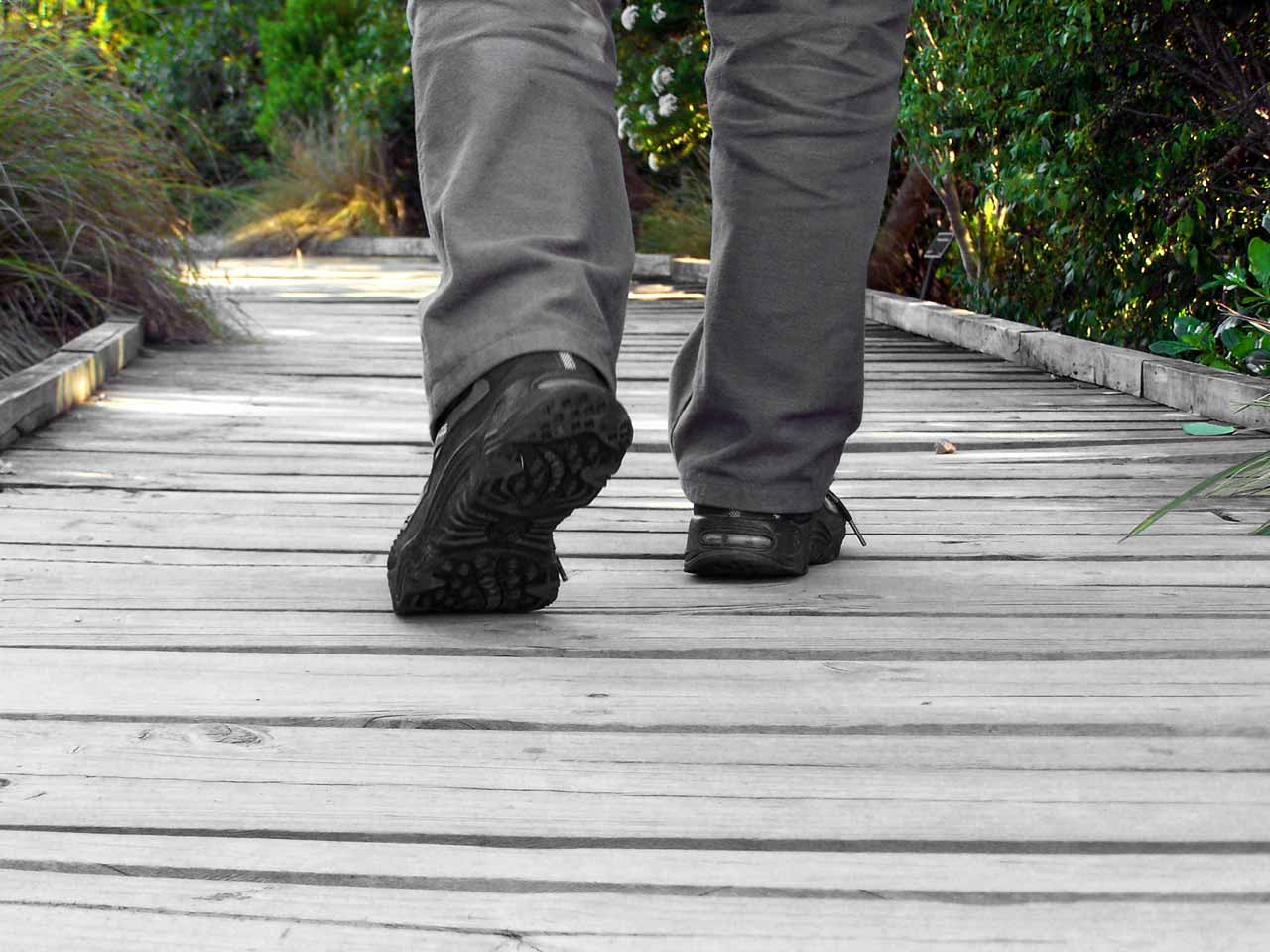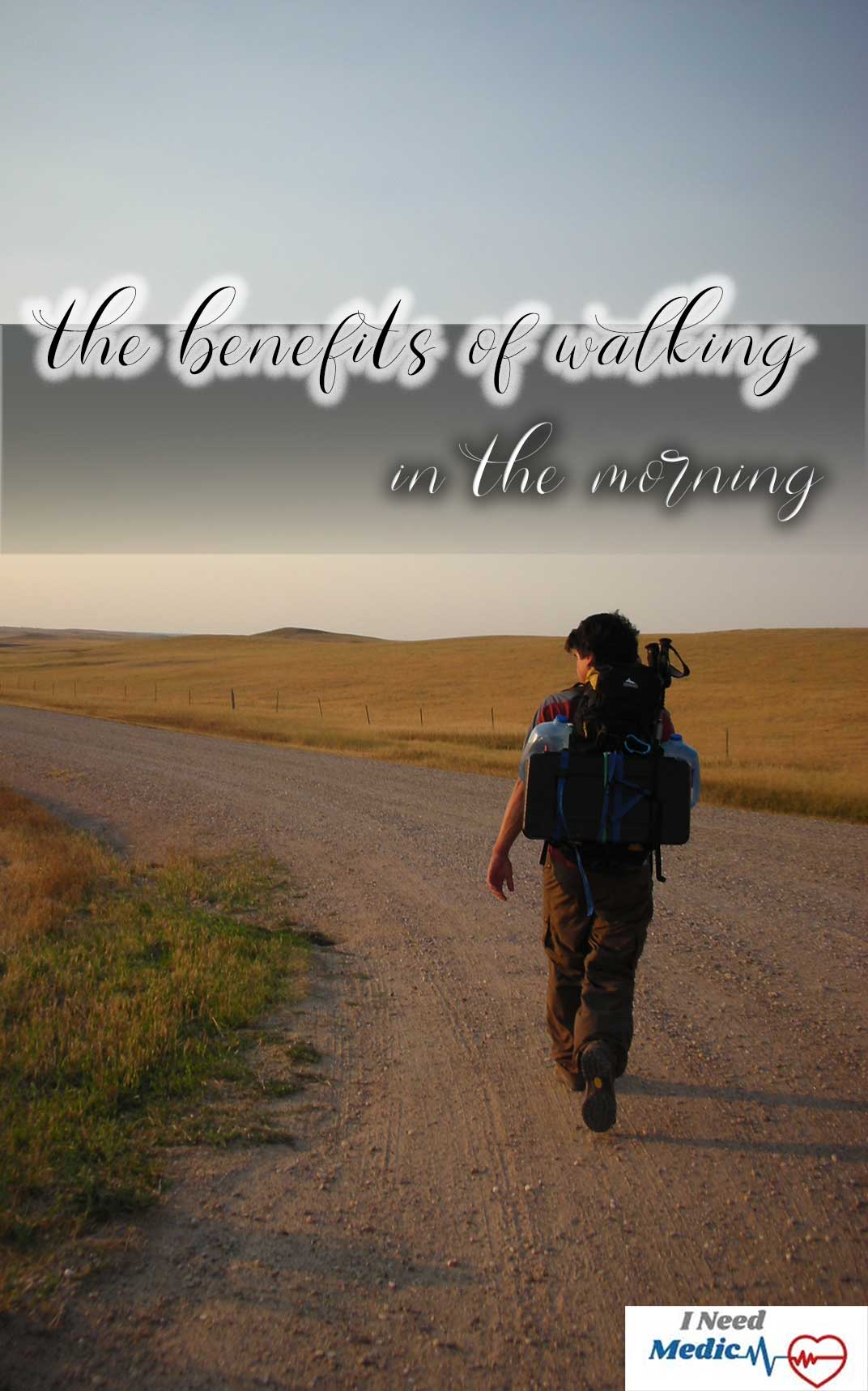Do you know that you can reduce heart risks and stroke by just taking a stroll around every day? Now you know! There are loads of benefits you can get from walking for 30 to 45 minutes every day.
Table of Contents
ToggleWalking is a simple yet powerful form of exercise that can bring about a myriad of health benefits when incorporated into one’s daily routine. Devoting just 30 minutes each day to walking can lead to significant improvements in both physical and mental well-being. From cardiovascular health to stress reduction, the advantages of this low-impact activity are diverse and accessible to people of all ages and fitness levels.
One of the primary benefits of walking is its positive impact on cardiovascular health. Engaging in a regular walking routine helps to improve circulation, lower blood pressure, and reduce the risk of heart disease. As the heart pumps more efficiently, the entire cardiovascular system becomes more robust, promoting longevity and overall well-being.
Walking is a form of exercise that has been over ages underrated because it looks too simple, easy, and too common to place on top of the list. People would rather lift dumbbells and strike yoga poses because they feel the more strain, the bigger the benefits.
Of all forms of exercise, walking is the easiest and most inexpensive form of exercise as it requires no form of equipment to engage in it. Apart from physical fitness, walking offers a lot of health benefits; from weight reduction to reducing the risks of chronic diseases.
Walking can be done by both young and old. It costs nothing to do it but it pays a lot to whoever engages in it. Walking every morning helps to wake up our organs that have rested the night before.
Walking is often overlooked as a form of exercise, but it can be just as effective as other more intense activities in improving overall health. A mere 30 minutes of walking daily can provide a range of benefits, from physical to mental well-being. This essay will explore the advantages of incorporating a 30-minute walk into your daily routine and why it is essential for promoting a healthy lifestyle.
Physical Benefits
In addition to its cardiovascular benefits, walking is an effective tool for weight management. While it may not burn calories as rapidly as more intense forms of exercise, the consistent and moderate nature of walking can contribute to weight loss and weight maintenance. Combined with a balanced diet, a daily 30-minute walk can be a key component of a healthy lifestyle.
- Weight management: Walking helps burn calories and contributes to maintaining a healthy weight. Regular physical activity, including walking, is crucial for preventing obesity and reducing the risk of chronic diseases associated with excess weight, such as diabetes and heart disease.
- Cardiovascular health: Walking increases blood circulation and strengthens the heart muscle, which reduces the risk of heart disease and stroke. Regular walking can also help lower blood pressure and cholesterol levels, further contributing to a healthier cardiovascular system.
- Improved muscular strength and endurance: Walking engages several muscle groups, such as the quadriceps, hamstrings, and calves, and helps strengthen them over time. Regular walking also increases bone density and reduces the risk of osteoporosis, a common concern as people age.
- Enhanced balance and coordination: Walking requires the integration of multiple body systems, like muscles and the vestibular system, which contribute to better balance and coordination. This can help prevent falls and improve overall physical fitness.
Mental Health Benefits
Walking also plays a crucial role in maintaining joint health and flexibility. Unlike high-impact activities that may strain joints, walking is gentle on the knees, hips, and ankles. This makes it an ideal exercise for individuals of all ages, including those with joint conditions or arthritis. Regular walking can help lubricate joints, reduce stiffness, and enhance overall joint function.
Beyond the physical benefits, walking has a profound impact on mental health. The rhythmic motion of walking can be meditative, promoting a sense of calm and reducing stress levels. Moreover, exposure to natural surroundings during a walk has been linked to improved mood and increased feelings of well-being. This connection to nature, even in an urban environment, fosters a sense of tranquility and mental clarity.
Stress reduction: Walking allows for the release of endorphins, which are natural mood elevators. These chemicals help reduce stress and anxiety, making walking an excellent method for managing daily stressors.
Improved mood and reduced depression: Regular physical activity, including walking, has been proven to reduce symptoms of depression and improve overall mental health. Walking outdoors can also provide exposure to sunlight, which helps regulate the body’s production of melatonin and serotonin, two hormones essential for regulating mood and sleep patterns.
Enhanced cognitive function: Walking stimulates blood flow to the brain, which can improve cognitive function, including memory and concentration. Studies have also shown that walking may lower the risk of developing dementia and Alzheimer’s disease.
Social and Environmental Benefits
Another notable advantage of walking is its accessibility. It requires no special equipment or gym memberships, making it a cost-effective and convenient form of exercise. Whether it’s a brisk walk around the neighborhood, a stroll in the local park, or a lunchtime walk at work, finding opportunities to incorporate walking into daily life is both achievable and sustainable.
- Social interaction: Walking can be a social activity, allowing for quality time with friends or family. It provides an opportunity to connect with others while also reaping the benefits of physical activity.
- Connection with nature: Walking in natural environments, such as parks or hiking trails, offers a chance to reconnect with nature, appreciate the beauty of the outdoors, and improve mental well-being.
- Environmental consciousness: Walking instead of driving for short distances can help reduce carbon emissions, noise pollution, and traffic congestion. This eco-friendly mode of transportation also promotes a more sustainable lifestyle.
It helps to start the day full of energy, it also improves the body shape and strengthens the immune system. Just walking slowly will not have an effect, it pays more to walk briskly to enhance the effect of this exercise even if you walk only 30 minutes a day!
Physical and Health Benefits of Walking 30 Minutes
- Burns calories; Taking a walk every day can help you burn calories. The number of calories you burn depends on a lot of factors like the intensity of the walk, how long you walked, your weight, and other factors. It would be more effective to walk uphill and down briskly to burn calories than walking on an under-desk treadmill at a slow pace. Walking is an effective exercise when it comes to weight loss.
- Reduces heart risks; Walking helps to lower bad cholesterol and increases the good one (HDL), lowers your heart pressure, and reduces your weight. Studies have proven that people with extra weight stand the risk of cardiovascular events. Since walking helps in weight reduction, it helps to reduce the risks of cardiovascular events.
- Reduces costs; Walking is unarguably the most inexpensive exercise. It requires no special equipment to perform. Expensive should not be an excuse for you not exercising because walking is totally free and requires no cost at all. Start hiking!
- Mental health; Taking a walk helps you to boost your mental health. For example, walking lightens the mood and helps the brain to rest and work more effectively. It also helps to reduce depression.
- Counters insomnia; various types of research have shown that people who walk more sleep faster, longer, and deeper than someone who does less moving around. Having good sleep can help the body system to rest and function more effectively.
- Increases muscle strength and endurance; Taking a walk helps to strengthen the muscles in the body as well as stretch the endurance of the system.
- Increases immune ability; Studies have shown that people who walk more have stronger immune systems than the ones who walk less. Taking a walk every day can perform wonders on a person’s immune system. The immune system is that system in your body that helps to fight diseases and infections.
- Reduces breast cancer risk; Research has shown that women who walk to exercise cut the risks of getting cancer by 14 percent.
- Longevity; walking about 45 minutes every day may be a ticket to a longer life for you as it helps you reduce the risk of life-threatening diseases, promotes wellness, boosts mental health, and so on. In short, walking promotes your overall health which is key to a longer life.
- Reduces stress; walking is a cardiovascular exercise so it boosts the endorphins that can reduce stress hormones and alleviate depression. Walking also helps to reduce fatigue.
Walking 30 to 45 Minutes Daily
The longer the better. Although walking less than 45 minutes will also benefit you walking for 45 minutes daily has a more effective impact on your overall health. As said earlier, the impact this exercise has on the body will defer from one person to the other because of some factors. These factors include;
- The terrain; Do you walk uphill or on flat surfaces? Someone who walks uphill and down is likely to have a more effective weight loss than a person who walks on a flat surface.
- The intensity; how fast do you walk up that hill or on a flat surface? The speed of your walking exercise is one factor that also determines how much impact you’d experience.
- The length of time; for how long do you take that hike? The longer the walk, the better the result.
A combination of the maximum of the above three premises will go a long way in your weight loss goals. If you have been walking and have not noticed much change in you, continue walking but this time try changing your terrain. Walk uphill, with more intensity, and for a maximum of 45 minutes daily.
Exhausting? Yes, you are bound to be exhausted from hiking uphill and down for 45 minutes daily but this will help you to be more effective in achieving your weight loss goals and also benefit you more health-wise.
No hills around? Try your stairs. Don’t use “no hills around” as an excuse, get on your stairs and go up and down for 45 minutes, it will also work.
Why walk 30 minutes every day?
Why do you wake up every day and put on your walking shoes? If you really want to enjoy the benefits of walking then you need to do it every day. Consistency is key to achieving more. If you want more results, you have to walk every day.
If you find it difficult to do this every day, find a partner. This would even be more fun because you can challenge each other for more minutes walking. You will not only achieve your slimming down goals, but you also get to bond.
Why should you take that walk in the morning?
Taking your walk every morning helps you start your day with a settled, focused mind, and a more active, stronger, and energized system to take off and start the day.
After your hike, you go home sweaty, take a shower, and feel refreshed. This will even improve your relationship with the people around you. A calm mind makes more accurate decisions.
Walking helps you to be calm so if you do it in the morning, you get to start your day smarter. Another added advantage of walking. Other reasons why you should do any exercise in the morning are;
- When you exercise in the morning, it gives your body a kind of fatigue that allows you to sleep longer and deeper at night.
- Exercising in the morning allows you to beat the sun. Exercising where there is heat or when the weather is hot drains energy faster, causing fatigue and dehydration.
- You get more energized when you exercise in the morning before the heat sets in. It will improve your stamina and muscular strength.
- For someone who gets easily distracted, you can exercise in the morning to avoid distraction just in case you want to do a little thinking to make some decisions.
- Early workouts tally with weight loss.
- Exercising in the morning has been discovered to lower blood pressure.
- An early morning workout will help increase your self-discipline.
Walking and weight loss
Ever wondered why your therapist told you to take a few minutes to walk every day to reduce your weight? Here is why; walking helps you to burn excess fats in the body. Too much of calories in the body cause overweight.
3500 calories equals 1 pound of fat in the body which means that if you take in too many calories, you automatically get fatter, and if not curbed you become pumped and before you know it become obese.
This takes us to how many calories we can burn each day from our walking exercise.
If a person who weighs 200 pounds walks briskly say 3 miles per hour, he burns 4 calories for every minute. This means if he takes a daily walk of 45 minutes, he will burn 180 calories per day. This also means that if he relies solely on walking to burn fat, he loses a pound of fat in 20 days.
For a person who is obese and cannot jog or do any other strenuous exercises, just walking is a good start for him. To speed up the weight loss process, he can eat less calorie-containing foods.
What do therapists say about walking as an exercise?
Therapists have come to a consensus that walking improves the general well-being of whoever engages in it. Jeff Miller, Ph.D. after his research on how walking and its effect concluded that walking will certainly increase the feeling of pleasant energy whether the subject likes it or not.
He further explained that also walking energizes a person as the feeling of engagement increases. Overall, he concluded that walking promotes happier and healthier living.
A therapy called “the walk and talk therapy” is now a common therapy amongst psychologists. General thoughts about this therapy are that it allows for a more open, conducive, and comfortable discussion with patients.
This only proves the previous assertion that walking calms you when you do it. Walking with your therapist gives a sense of friendship such that it feels like you are taking a walk with your old friend and talking about life issues. It is more soothing than sitting at a table, fidgeting, and avoiding eye contact.
All in all, therapists think that walking helps promote calmness and allows you room to do some correct thinking and make some right decisions.
Incline walking
Walking does not have to be done with equipment, you can do it by taking your normal brisk walk around or climbing your stairs up and down or you could use a treadmill. Whether at home or at a gym, you can use your treadmill as workout equipment.
Incline walking simply means walking on a slope. So, whether you walk uphill or up the stairs or use a treadmill inclined function, you are doing the same thing; walking on a slope.
Walking on a slope has more advantages than walking on a flat surface. Incline walking strengthens your calves, and backside and gives you stronger thighs. Before we note the reasons why you should do more incline walking it’s important to note that foot and ankle injuries can occur more commonly.
That’s why wearing sturdy shoes with a flexible fit is important. But it goes beyond that, and it’d be a good idea to invest in some quality insoles to add a layer of comfort to your feet, especially if you have alignment problems.
- Cardiovascular fitness; incline walking helps to condition your lungs and your heart. Walking is an aerobic exercise, the point of aerobic exercises is to strengthen the heart and help it to circulate blood throughout the body. It also helps to lower blood pressure and bad cholesterol.
- Burn more fat; incline walking helps you burn more calories than walking on a flat surface. Walking on a slope engages the body more as it equals walking on a flat surface for 45 minutes. This means that 90 minutes of brisk flat surface walking equals 45 minutes of incline walking.
- More muscle strength; Slow-twitch muscles are triggered during an incline walking exercise. These fibers help you tone your muscles and build lean calf muscles
- easing back pain; instead of lying still when you have lower back pain, try walking on a slope instead. Walking on a flat surface will do too but walking on a slope will allow the blood to circulate more around the body which will ease back pain faster.
Why Walking Is the Best Exercise for You Even if you only do 30 Minutes
- Cost-friendly; the biggest thing you’d buy will be walking shoes which is not necessary if you already have one.
- No specific venue; There is no specific venue to take a walk. You can do your walk anywhere.
- Side effects; there are hardly any side effects involved in walking. It has little or no negative impact on the body and can be engaged in by anyone.
- Antidepressant; Imagine taking a walk with your friends, it will be fun and exciting. There will be a lot of challenging each other, nice conversations, and plenty of activities. Depression will hardly stay in a place like this.
- Stay active; walking causes you to be more active and involved in activities around you. You become wired when you walk and engage more in various activities.
Some tips to get started with your walk
- It’s advisable to not eat before a workout but if you must eat, make sure to eat 3-4 hours before a workout to prevent jabs in the side of your stomach.
- Make sure you have a good night’s rest. A good night’s rest will aid you to wake up early rested and ready to go.
- To make work out interesting and appealing, get a partner. This will help you to get up early even if you don’t want to.
- Don’t forget to set your alarm and when you do, put it out of reach. Putting it close to you might be a terrible idea as you may put it off and go back to sleep.
- Your body gets dehydrated during exercises so drink water to boost your hydration. Drink up to 2 to 3 liters of water daily.
- Get your workout gear ready, and lay them where you can see them so you don’t have to waste time looking for what to wear.
All in all, consistency is key, never stop exercising. Don’t be too lazy to get up for your morning exercise! Anytime you feel you should skip your daily exercise remember the benefits you are about to lose.
If you can’t do it alone, talk your friend into joining you. Eat good and healthy food to replace your energy.
How to motivate yourself to walk every day
Motivating yourself to walk every day might seem like a challenge at first, but with the right strategies, it can become an enjoyable and sustainable habit. Here are ten tips to help you get started and stay committed to daily walking:
- Set clear goals: Establishing specific, measurable, and achievable goals will give you a sense of purpose and direction. Your goals could be related to weight loss, improving cardiovascular health, or walking a certain number of steps daily.
- Start small and build up: Begin with a comfortable walking duration or distance, and gradually increase it over time. Starting small makes the habit less intimidating and allows your body to adjust to the new routine.
- Establish a routine: Schedule your walks at the same time every day to create consistency. This will help your body and mind become accustomed to the routine, making it easier to stick to.
- Find a walking buddy: Walking with a friend or family member can make the activity more enjoyable and provide additional motivation. You’ll be more likely to stay committed when you have someone to share the experience with and hold you accountable.
- Mix it up: To prevent boredom, change your walking routes, and pace, or incorporate intervals. Exploring new neighborhoods or scenic trails can make your walks more engaging and exciting.
- Use a tracking app: Monitoring your progress with a walking app can be a great motivator. These apps often provide feedback on steps, distance, and calories burned, giving you a sense of accomplishment as you reach milestones.
- Create a reward system: Reward yourself for meeting walking goals or milestones. This can be as simple as treating yourself to a relaxing bath or purchasing new walking shoes once you’ve reached a specific target.
- Listen to music, podcasts, or audiobooks: Engaging your mind while walking can make the activity more enjoyable. Listening to your favorite tunes, podcasts, or audiobooks can help the time pass more quickly and keep you entertained.
- Join a walking group or participate in challenges: Connecting with others who share your interest in walking can provide additional motivation and support. Many communities have walking clubs, or you can find online groups and challenges to participate in.
- Reflect on your progress and achievements: Regularly review your progress and celebrate your achievements, no matter how small. Acknowledging your accomplishments can help keep you motivated and focused on your goals.
Remember, building any new habit takes time, so be patient with yourself and stay consistent. By implementing these tips, you’ll be well on your way to establishing a daily walking routine that enhances your physical and mental well-being.
Incorporating a 30-minute walk into your daily routine can provide numerous physical, mental, and social benefits. From improving cardiovascular health and weight management to reducing stress and promoting social interaction, walking is an easy and accessible way to enhance your overall well-being, there are so many types of health that you can improve. Embrace the power of walking and take the first step towards a healthier, happier life.
In conclusion, dedicating just 30 minutes each day to walking can yield a multitude of health benefits. From enhancing cardiovascular health and managing weight to promoting joint flexibility and supporting mental well-being, walking is a simple yet effective way to invest in one’s overall health. The accessibility and ease of incorporating walking into daily routines make it a realistic and enjoyable option for individuals seeking to improve their physical and mental fitness.
Reference:
https://www.mayoclinic.org/healthy-lifestyle/fitness/in-depth/walking/art-20046261
https://www.health.harvard.edu/staying-healthy/5-surprising-benefits-of-walking





